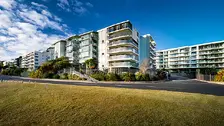The 7 Key Metrics Every NZ Property Investor Should Track
 By
Trent Bradley
·
15 minute read
By
Trent Bradley
·
15 minute read

Property investment generates vast amounts of data – rental income, expenses, property values, mortgage balances, interest rates, vacancy periods, and maintenance costs. Amid this information deluge, how do you identify what actually matters? Which numbers deserve your attention and which are merely noise?
Table of Contents
- Metric 1: Net Rental Yield
- Metric 2: Portfolio Cash Flow Position
- Metric 3: Loan-to-Value Ratio (LVR)
- Metric 4: Vacancy Rate
- Metric 5: Maintenance Cost Ratio
- Metric 6: Equity Position and Growth Rate
- Metric 7: Return on Equity (ROE)
- Implementing a Tracking System
- The Luminate Financial Group Perspective
- Frequently Asked Questions
Key Takeaways
- Net rental yield ((annual rent - operating expenses) ÷ property value × 100) reveals income-generating capacity independent of financing—New Zealand properties typically deliver 1.5-2.5% net yields in Auckland versus 3-5% in regional centers, providing objective comparison across portfolio
- Portfolio cash flow (total rental income - total expenses - total mortgage payments) tracks exact monthly subsidies or surplus generation—early portfolios requiring $10,000-$20,000 annual subsidies are normal, but cash flow should trend toward neutral then positive as mortgages reduce and rents increase over 10-15 years
- Loan-to-Value Ratio (mortgage balance ÷ property value × 100) indicates equity position and borrowing capacity—LVRs should decline from initial 60-80% toward 50% or lower over 10+ years through appreciation and principal reduction, with LVRs under 70% preserving refinancing capacity
- Vacancy rate (vacant days ÷ 365 × 100) directly impacts cash flow with well-managed properties experiencing under 5% annually—rates consistently above 10% indicate serious property management, tenant quality, or property condition problems requiring immediate investigation
- Return on Equity ((net rental income + capital appreciation - costs) ÷ current equity × 100) reveals capital efficiency—strong ROE exceeds 10-12%, but ROE naturally declines as properties mature and leverage reduces, signaling potential strategic sales or refinancing to extract equity
- Maintenance cost ratio (annual maintenance ÷ rental income × 100) should average 10-20% of rental income or 0.5-1.5% of property value annually—properties consistently exceeding 25% of rental income on maintenance warrant review as potentially poor investments
At Luminate Financial Group, we've observed a clear pattern: successful property investors track specific metrics consistently, while struggling investors either track nothing systematically or drown in excessive detail that obscures important trends. The difference between these approaches often determines whether portfolios deliver expected returns or disappoint.
You don't need to track dozens of metrics to manage property investments effectively. Seven key measurements provide comprehensive insight into portfolio health, performance trends, and areas requiring attention. These metrics help you make informed decisions, identify problems early, and optimize returns over time.
Let's explore the seven essential metrics every New Zealand property investor should track religiously.
Metric 1: Net Rental Yield
What It Measures
Net rental yield represents the annual net rental income as a percentage of property value, accounting for all operating expenses but excluding mortgage costs. It reveals how effectively your property generates income relative to its value.
Why It Matters
Net yield provides the clearest picture of a property's income-generating capacity independent of your financing structure. Two investors might own identical properties with vastly different cash flow due to different mortgage arrangements, but net yield remains constant regardless of financing.
Tracking net yield helps you compare properties objectively, assess whether rental income is keeping pace with property value appreciation, identify underperforming properties requiring attention, and evaluate whether properties meet your original investment criteria.
How to Calculate It
Formula: Net Rental Yield = ((Annual Rental Income - Annual Operating Expenses) ÷ Current Property Value) × 100
Annual operating expenses include:
- Council rates and water charges
- Insurance premiums
- Property management fees
- Maintenance and repairs
- Body corporate fees (if applicable)
- Compliance costs
- Accounting fees allocated to this property
Example calculation:
Property current value: $600,000 Annual rental income: $31,200 Annual expenses: $15,600 Net annual income: $15,600
Net Rental Yield = ($15,600 ÷ $600,000) × 100 = 2.6%
What Good Looks Like
New Zealand net rental yields typically range from 1.5% to 4.5% depending on location and property type. Auckland properties often deliver 1.5-2.5% net yields, while regional centers might achieve 3-5% net yields.
Track this metric quarterly or at minimum annually. Calculate it every time you receive updated property valuations. Monitor for declining trends that might indicate rents aren't keeping pace with value appreciation or expenses are increasing faster than income.
Red Flags to Watch
Net yields declining over time suggest problems including rents falling behind market rates or property value, expenses increasing unsustainably, or property requiring more maintenance than anticipated. Net yields significantly below market averages for comparable properties indicate underperformance requiring investigation.
Metric 2: Portfolio Cash Flow Position
What It Measures
Portfolio cash flow represents the net monthly or annual cash generated or consumed by your entire property portfolio after all expenses and mortgage payments. It reveals whether your portfolio provides income or requires subsidies, and by how much.
Why It Matters
Cash flow directly impacts your lifestyle and financial sustainability. Understanding your exact subsidy requirement or surplus generation is essential for financial planning, budgeting, and assessing portfolio scalability.
Many investors have vague notions that properties "cost about $1,000 monthly" without knowing precise figures. This imprecision creates stress and prevents strategic planning. Precise cash flow tracking eliminates uncertainty.
How to Calculate It
Formula: Portfolio Cash Flow = Total Annual Rental Income - Total Annual Expenses - Total Annual Mortgage Payments
Calculate this comprehensively across all properties, including all rental income from all properties, all operating expenses across all properties, and all mortgage principal and interest payments.
Example calculation:
Three-property portfolio:
- Combined annual rental income: $82,500
- Combined annual expenses: $34,200
- Combined annual mortgage payments: $63,400
Portfolio Cash Flow = $82,500 - $34,200 - $63,400 = -$15,100 annually (or -$1,258 monthly)
This calculation reveals you're subsidizing your portfolio by approximately $1,258 monthly from personal income.
What Good Looks Like
Early in your investment journey, negative portfolio cash flow is normal and acceptable, particularly if prioritizing capital growth in major centers. The key is ensuring subsidies remain within your comfortable capacity.
As portfolios mature, cash flow should trend toward neutral and eventually positive as mortgages reduce and rents increase. Track this metric monthly by reviewing all property-related transactions, ensuring you capture everything accurately.
Tracking Improvements Over Time
Monitor portfolio cash flow trends year-over-year. Your goal is steady improvement as older properties mature, even if absolute cash flow remains negative. A portfolio requiring $20,000 annual subsidies last year but only $15,000 this year demonstrates progress.
Calculate your "break-even date" – when you expect portfolio cash flow to reach neutral, then positive. Update this projection annually as circumstances change.
Red Flags to Watch
Cash flow deteriorating over time rather than improving suggests serious problems including expenses increasing faster than rental income, extended vacancy periods, properties requiring excessive maintenance, or mortgage interest rate increases consuming gains from rent increases.
Subsidies exceeding 15-20% of your gross employment income create sustainability risk. If you're subsidizing $30,000 annually on $100,000 income, you're potentially overextended.
Metric 3: Loan-to-Value Ratio (LVR)
What It Measures
LVR represents your mortgage balance as a percentage of property value. It indicates your equity position and leverage level for each property and across your entire portfolio.
Why It Matters
LVR affects your financial flexibility, borrowing capacity, and risk exposure. Banks use LVR to assess additional lending applications. Lower LVRs indicate greater equity buffers protecting against market downturns.
Tracking LVR helps you identify when properties have sufficient equity for refinancing, monitor your overall risk exposure, assess whether you're building equity as expected, and plan timing for additional property acquisitions.
How to Calculate It
Formula: LVR = (Current Mortgage Balance ÷ Current Property Value) × 100
Calculate this individually for each property and also calculate portfolio average LVR across all properties.
Example calculation:
Property current value: $650,000 Current mortgage: $455,000
LVR = ($455,000 ÷ $650,000) × 100 = 70%
For portfolio LVR:
Total portfolio value: $1,950,000 Total mortgages: $1,330,000
Portfolio LVR = ($1,330,000 ÷ $1,950,000) × 100 = 68.2%
What Good Looks Like
Investment property LVRs typically start at 60-80% depending on your deposit size. Over time, LVRs should decline as properties appreciate and mortgages reduce through principal payments.
Banks generally require investment property LVRs below 70% (sometimes 60%) for additional lending. Maintaining LVRs below these thresholds preserves refinancing and expansion capacity.
Update LVR calculations annually at minimum, or whenever you receive updated valuations. After significant market movements, calculate more frequently to understand your current position.
Tracking Improvements Over Time
LVR should trend downward over your holding period. A property purchased at 80% LVR should decline to 75% within a few years through appreciation and principal reduction, then continue declining steadily.
Properties held ten-plus years should show LVRs of 50% or lower, indicating substantial equity accumulation. Properties approaching 40% LVR become candidates for refinancing to extract equity for additional investments.
Red Flags to Watch
LVRs increasing or remaining flat despite years of ownership suggest problems including property values declining or stagnating, interest-only loans preventing principal reduction, or you've refinanced to extract equity without corresponding value appreciation.
Portfolio LVRs exceeding 80% create vulnerability. If markets correct, you risk negative equity positions affecting borrowing capacity and creating forced holding situations.
Metric 4: Vacancy Rate
What It Measures
Vacancy rate represents the percentage of time properties sit empty without rental income. It reveals how effectively you're maintaining tenancy and the quality of your property management.
Why It Matters
Vacancy directly impacts cash flow and returns. Every week a property sits empty costs you the foregone rent plus ongoing expenses you must cover personally. Vacancy rates significantly exceeding market averages indicate problems requiring attention.
Tracking vacancy helps you assess property management quality, compare properties and locations, identify properties requiring improvements to attract tenants, and calculate realistic income expectations.
How to Calculate It
Formula: Vacancy Rate = (Vacant Days ÷ Total Days) × 100
Calculate this annually for each property and across your portfolio.
Example calculation:
Property experienced two vacancy periods during the year:
- 3 weeks between tenancies (21 days)
- 1 week for repairs (7 days)
- Total vacant: 28 days
Annual Vacancy Rate = (28 ÷ 365) × 100 = 7.7%
For portfolio vacancy rate, calculate total vacant days across all properties divided by total possible rental days (properties × 365).
What Good Looks Like
Well-managed New Zealand investment properties typically experience vacancy rates below 5% annually. Strong markets with high rental demand might achieve 2-3% vacancy rates.
Vacancy rates of 5-8% are acceptable but warrant attention. Rates consistently above 10% indicate serious problems requiring immediate investigation.
Track vacancy meticulously by recording exact dates properties become vacant, reasons for vacancy, and dates new tenancies commence. This data reveals patterns that inform strategy improvements.
Understanding Acceptable Vacancy
Some vacancy is normal and unavoidable. Between tenancies, you'll need time for inspections, repairs, cleaning, and finding new tenants. Plan for 2-4 weeks of vacancy every two to three years as tenancies turn over.
Additional vacancy for renovations or improvements is acceptable if strategic. Taking a property offline for a month to complete value-adding improvements that increase rents and property value represents good investment, not problematic vacancy.
Red Flags to Watch
Frequent short-term vacancies suggest you're attracting unstable tenants or properties have issues making longer tenancies difficult. Properties experiencing 4+ vacancy periods annually require property management reviews.
Extended vacancy periods (8+ weeks) between tenancies indicate properties are overpriced for the market, in poor condition deterring tenants, or poorly marketed by property managers.
Properties showing consistently higher vacancy than comparable properties in the same market suggest specific problems with that property requiring attention.
Metric 5: Maintenance Cost Ratio
What It Measures
Maintenance cost ratio represents annual maintenance and repair expenses as a percentage of rental income or property value. It reveals how efficiently you're maintaining properties and helps identify problems before they become expensive.
Why It Matters
Maintenance costs vary significantly year-to-year but should average reasonably consistent percentages over time. Tracking this ratio helps you budget accurately, identify properties requiring excessive maintenance, recognize when deferred maintenance is accumulating, and compare properties to identify outliers.
Properties requiring excessive maintenance relative to value or income might indicate poor initial property selection, deferred maintenance catching up, or properties approaching end-of-life for major components.
How to Calculate It
Formula: Maintenance Cost Ratio = (Annual Maintenance Costs ÷ Annual Rental Income) × 100
Alternatively: (Annual Maintenance Costs ÷ Property Value) × 100
Track both calculations to gain complete perspective.
Example calculation:
Annual rental income: $28,000 Annual maintenance costs: $3,200 Property value: $550,000
Maintenance to Income Ratio = ($3,200 ÷ $28,000) × 100 = 11.4% Maintenance to Value Ratio = ($3,200 ÷ $550,000) × 100 = 0.58%
What Good Looks Like
Maintenance typically consumes 10-20% of rental income annually for New Zealand investment properties. As percentage of property value, expect 0.5-1.5% annually on average.
Newer properties might average 5-10% of rental income on maintenance, while older properties might require 15-25%. Properties consistently exceeding 25% of rental income on maintenance warrant review.
Track maintenance costs meticulously by category including routine maintenance, emergency repairs, tenant-caused damage, compliance work, and capital improvements (track separately from maintenance).
Understanding Variability
Maintenance costs vary dramatically year-to-year. You might spend $1,000 one year and $8,000 the next when the hot water cylinder fails and repainting is needed. This variability is normal.
Track rolling three-year averages to smooth volatility and identify true trends. A property averaging 8% of rental income on maintenance over three years performs well even if a single year showed 15%.
Red Flags to Watch
Properties consistently requiring 25%+ of rental income on maintenance might be fundamentally poor investments, especially if maintenance doesn't add value or prevent deterioration.
Maintenance costs trending upward year-over-year suggest properties are aging and approaching major replacement cycles for key components. Plan financially for these upcoming expenses.
Properties requiring dramatically more maintenance than others in your portfolio or market comparables indicate specific issues requiring investigation.
Metric 6: Equity Position and Growth Rate
What It Measures
Your equity position represents your actual ownership stake in properties – current value minus outstanding mortgages. Equity growth rate measures how quickly this ownership position is increasing through appreciation and debt reduction.
Why It Matters
Equity represents your actual wealth in property investments. While property values matter, your equity – what you'd actually receive after paying all debts – matters more for assessing genuine wealth accumulation.
Tracking equity helps you understand actual wealth growth beyond paper values, identify when properties have sufficient equity for refinancing or additional investments, assess whether you're meeting wealth accumulation goals, and plan for eventual retirement or financial independence.
How to Calculate It
Formula: Equity = Current Property Value - Current Mortgage Balance
Equity Growth Rate = ((Current Equity - Previous Equity) ÷ Previous Equity) × 100
Calculate total equity across your entire portfolio, not just individual properties.
Example calculation:
Current portfolio value: $2,100,000 Current total mortgages: $1,400,000 Current equity: $700,000
Previous year equity: $580,000
Equity Growth Rate = (($700,000 - $580,000) ÷ $580,000) × 100 = 20.7%
This reveals your equity grew by $120,000 or 20.7% over the past year through combination of property appreciation and mortgage principal reduction.
What Good Looks Like
In growth markets with reasonable leverage, equity should grow 8-15% annually through combined appreciation and principal reduction. Stronger markets or lower leverage might deliver 15-25% annual equity growth.
Track equity quarterly or semi-annually by obtaining updated property valuations, knowing current mortgage balances, and calculating the difference. Property valuation websites provide estimates between formal valuations.
Understanding Equity Components
Equity grows through two mechanisms: capital appreciation increasing property values and debt reduction decreasing mortgage balances. Strong equity growth combines both.
Early in property ownership, appreciation dominates equity growth. After ten-plus years, debt reduction becomes increasingly significant as mortgages decline substantially.
Planning Around Equity
Many investors set equity milestones such as reaching $500,000 total equity to fund additional investments, achieving $1 million equity as a psychological milestone, or accumulating sufficient equity to refinance and acquire 2-3 additional properties.
Use equity tracking to assess progress toward these milestones and adjust strategies if equity growth lags expectations.
Red Flags to Watch
Equity declining or stagnant despite years of ownership indicates serious problems including property values falling, no principal reduction (interest-only loans), or you're extracting equity faster than properties appreciate.
Equity growth significantly below 5% annually in reasonable markets suggests poor property selection or market timing, though occasional flat years occur even in good long-term investments.
Metric 7: Return on Equity (ROE)
What It Measures
Return on equity represents your total annual returns (rental income plus capital appreciation minus all costs) as a percentage of your current equity position. It reveals how efficiently your equity is working.
Why It Matters
ROE helps you assess whether equity should remain in properties or be redeployed elsewhere. Properties with low ROE might be candidates for sale, with proceeds funding purchases offering superior returns.
As properties appreciate and mortgages reduce, substantial equity accumulates. If this equity generates minimal returns, you might achieve better results selling and redeploying capital.
Tracking ROE helps you compare properties within your portfolio, identify underperforming assets, time strategic sales and acquisitions, and assess overall portfolio efficiency.
How to Calculate It
Formula: ROE = ((Annual Net Rental Income + Annual Capital Appreciation - Annual Costs) ÷ Current Equity) × 100
This calculation is complex because it includes unrealized capital gains, but provides crucial insight into equity efficiency.
Example calculation:
Property details:
- Current value: $650,000
- Current equity: $250,000
- Annual net rental income: $4,500
- Annual capital appreciation (5%): $32,500
- Annual costs (maintenance, etc.): $2,000
Annual net return = $4,500 + $32,500 - $2,000 = $35,000
ROE = ($35,000 ÷ $250,000) × 100 = 14%
Your equity in this property generates 14% annual returns through combination of income and appreciation.
What Good Looks Like
Strong ROE exceeds 10-12% in typical market conditions. Properties delivering 15-20% ROE are performing excellently and warrant holding.
Properties with ROE below 5-7% might be candidates for strategic review. Could that equity achieve better returns elsewhere?
Calculate ROE annually for each property and across your entire portfolio. This metric becomes increasingly important as portfolios mature and substantial equity accumulates.
Understanding ROE Evolution
ROE typically declines as properties mature. A new property with 80% leverage and strong appreciation might show 25% ROE initially. After fifteen years with 40% leverage, ROE might decline to 8-10% despite continuing appreciation.
This declining ROE isn't necessarily problematic if absolute returns remain acceptable. However, it might signal time to consider strategic sales, refinancing to extract equity, or accelerating debt reduction to improve cash flow.
Strategic Decisions Based on ROE
Properties with ROE below 6-7% for multiple consecutive years warrant strategic review. Options include selling and redeploying proceeds into higher-return properties, refinancing to extract equity for additional investments elsewhere, or accepting lower returns if properties provide other benefits like exceptional cash flow or strategic portfolio balance.
Red Flags to Watch
ROE below 5% suggests equity is working very inefficiently. Unless properties provide specific strategic benefits, consider whether better opportunities exist.
ROE declining year-over-year despite continuing market appreciation indicates problems with specific properties or your leverage has reduced to levels where returns no longer justify continued holding.
Implementing a Tracking System
Understanding these metrics matters little without systems for tracking them consistently. Implement simple processes for measuring and monitoring these key indicators.
Monthly Tracking
Track these monthly through bank account reviews:
- Portfolio cash flow (exact rental income and all expenses)
- Vacancy periods for any properties
Quarterly Tracking
Calculate these quarterly:
- Net rental yields (using rolling 12-month income/expenses)
- LVR updates if property values change significantly
Annual Tracking
Calculate these at least annually:
- Vacancy rates (complete annual assessment)
- Maintenance cost ratios (annual totals)
- Equity positions and growth rates
- Return on equity across portfolio
Tools and Systems
Use spreadsheets, property investment software, or even simple notebooks – whatever ensures consistent tracking. The specific tool matters less than using it regularly.
Many property investors create annual review documents summarizing all seven metrics for each property and the portfolio overall. This annual snapshot enables comparing year-over-year performance and tracking long-term trends.
The Luminate Financial Group Perspective
At Luminate Financial Group, we help clients implement tracking systems for these seven metrics and interpret results to inform strategic decisions. We've observed that investors who track these metrics consistently make better decisions, identify problems earlier, and achieve superior results compared to those managing properties by intuition alone.
These seven metrics provide comprehensive portfolio insight without overwhelming detail. They cover income generation (net yield), cash flow sustainability (portfolio cash flow), leverage and risk (LVR), operational efficiency (vacancy and maintenance ratios), wealth accumulation (equity growth), and capital efficiency (ROE).
Track these metrics religiously. Schedule specific times quarterly and annually to calculate them. Maintain simple records documenting results over time. Compare year-over-year performance to identify trends. Use insights gained to inform decisions about property improvements, strategic sales, additional acquisitions, or portfolio optimization.
Property investment rewards those who manage portfolios strategically based on objective metrics rather than guesswork or assumptions. These seven measurements provide the essential intelligence needed for sound decision-making throughout your investment journey.
What gets measured gets managed, and what gets managed improves over time. Start tracking these seven metrics today, maintain consistent measurement over months and years, and watch as this discipline improves your investment results measurably and substantially.
Frequently Asked Questions
How often should I calculate these metrics for my investment properties?
Implement tiered tracking frequency based on metric importance and data requirements: Monthly tracking (review bank statements)—portfolio cash flow capturing exact rental income and all expenses, vacancy periods noting dates and reasons for any empty properties; Quarterly tracking (every 3 months)—net rental yields using rolling 12-month income/expenses for accuracy, LVR updates if property values change significantly or after major mortgage payments; Annual tracking (comprehensive review)—vacancy rates calculating total vacant days across year, maintenance cost ratios totaling annual maintenance by category, equity positions requesting updated valuations, Return on Equity assessing capital efficiency across portfolio. Additionally conduct comprehensive annual portfolio reviews documenting all seven metrics for each property enabling year-over-year comparison and long-term trend analysis. Consistent tracking matters more than specific tools—use spreadsheets, property software, or notebooks ensuring regular measurement.
What's a realistic Return on Equity I should expect from my investment properties?
Strong ROE exceeds 10-12% in typical market conditions combining rental income and capital appreciation—properties delivering 15-20% ROE perform excellently and warrant continued holding. However, ROE naturally declines as properties mature: new properties with 80% leverage and 6% appreciation might show 20-25% ROE initially, after 15 years with 40% leverage ROE typically declines to 8-10% despite continuing appreciation. This declining ROE doesn't necessarily indicate problems if absolute returns remain acceptable—$35,000 annual return on $250,000 equity (14% ROE) is excellent, while $35,000 return on $500,000 equity (7% ROE) after further appreciation warrants strategic review. Properties showing ROE below 5-7% for multiple consecutive years become candidates for strategic sales redeploying proceeds into higher-return opportunities, refinancing extracting equity for additional investments, or accepting lower returns if providing exceptional cash flow or portfolio balance benefits.
How do I know if my property's net rental yield is good or bad?
Compare net yields against location-specific benchmarks and property types rather than absolute standards: Auckland residential properties delivering 1.5-2.5% net yields are typical—yields under 1.5% suggest potential overvaluation or excessive expenses, Regional center properties (Hamilton, Tauranga, Palmerston North) should achieve 2.5-4% net yields—yields under 2.5% indicate underperformance, Provincial properties (Invercargill, Gisborne, smaller towns) offering 3-5%+ net yields are standard—yields under 3% warrant investigation. Additionally compare within your portfolio—if one property shows 2.8% net yield while similar properties achieve 3.5%, investigate specific issues like below-market rents, excessive management costs, or abnormal maintenance expenses. Track net yield trends over time—declining yields despite stable rents suggest property value appreciation outpacing rent increases (common growth markets) or expenses escalating faster than income (problematic requiring cost management).
What portfolio cash flow position is sustainable for my income level?
Sustainable negative cash flow depends on stable take-home income capacity—calculate maximum affordable subsidy as 10-15% of annual after-tax income: $60,000 take-home income supports $6,000-$9,000 annual subsidies ($500-$750 monthly), $100,000 take-home supports $10,000-$15,000 annually ($833-$1,250 monthly), $150,000+ take-home supports $15,000-$22,500 annually ($1,250-$1,875 monthly). Exceeding these thresholds creates unsustainable situations risking forced sales during income disruptions or market downturns. However, consider total household income not just primary earner—couples with combined $160,000 after-tax income can sustainably subsidize $16,000-$24,000 annually across portfolio. Portfolio cash flow should improve over time—subsidies declining year-over-year indicate healthy maturation as rents increase and mortgages reduce. Properties requiring subsidies beyond comfortable capacity longer than 5-7 years may indicate poor property selection or excessive leverage requiring portfolio restructuring.
Should I be concerned if my property's LVR isn't decreasing?
Yes—LVRs remaining flat despite years of ownership indicate problems requiring investigation: property values stagnant or declining (major concern suggesting poor location selection or market weakness), interest-only mortgages preventing principal reduction (acceptable if strategic but limits equity building), recent refinancing extracted equity offsetting appreciation (acceptable if funding additional investments but increases leverage), or excessive borrowing against appreciation (concerning if leverage remains consistently high). LVRs should decline steadily: new investment properties starting 70-80% LVR should decrease to 65-75% after 3-5 years through 5% annual appreciation and modest principal reduction, properties held 10+ years should show 50-60% or lower LVRs indicating substantial equity accumulation. Strategies improving LVR: switch from interest-only to principal-and-interest mortgages accelerating debt reduction, make extra principal payments when cash flow permits, avoid refinancing to extract equity unless funding additional investments generating superior returns, and consider strategic sales if properties show persistent value stagnation limiting equity growth.
How can I reduce my maintenance cost ratio if it's consistently high?
High maintenance ratios (consistently 25%+ of rental income or 2%+ of property value) warrant investigation and intervention: Immediate actions—obtain competitive quotes for recurring maintenance work (often save 20-30%), negotiate annual service contracts with tradespeople providing preferential rates, conduct proactive maintenance preventing expensive reactive repairs, and address deferred maintenance systematically rather than allowing problems to compound. Medium-term strategies—renovate or upgrade properties reducing ongoing maintenance (new roof, exterior repaint, modern fixtures requiring less upkeep), improve tenant quality through better screening reducing tenant-caused damage, switch property managers if current management permits excessive maintenance costs, and implement preventative maintenance schedules catching issues early. Long-term considerations—properties consistently requiring excessive maintenance despite interventions may be fundamentally poor investments worth selling and redeploying capital into better-condition properties, older properties approaching major component replacement (roof, plumbing, electrical) may justify strategic renovation or sale before expensive failures occur. Target maintenance averaging 10-15% of rental income over rolling 3-year periods allowing for year-to-year variability while maintaining reasonable long-term ratios.

Trent Bradley
Trent Bradley is a New Zealand financial advisor specializing in property-backed finance and investment consulting. With over 26 years of experience running his mortgage broking business, he has helped wholesale investors access high-yield property-backed loan opportunities. For the past 12 years, Trent has led Luminate Finance, a New Zealand finance company dedicated to connecting investors with secure property investment solutions.








































